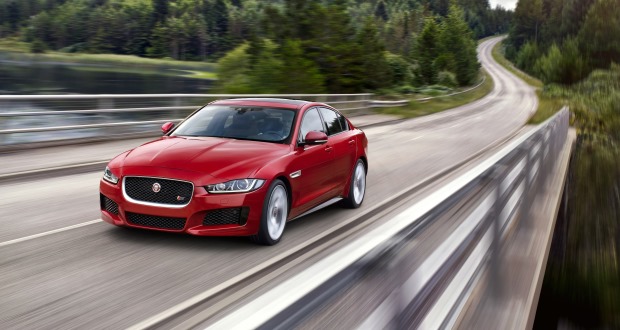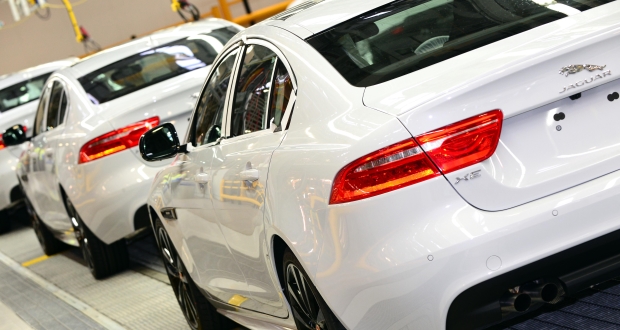 It seems that scarcely a day goes by without some news of investment, recruitment, or new product activity at Jaguar Land Rover. The company, owned by Tata of India, is rightly billed as a great British success story, although the figures show that Land Rover has the lion’s share of the business and makes the money. Now Jaguar has to show what it can do.
It seems that scarcely a day goes by without some news of investment, recruitment, or new product activity at Jaguar Land Rover. The company, owned by Tata of India, is rightly billed as a great British success story, although the figures show that Land Rover has the lion’s share of the business and makes the money. Now Jaguar has to show what it can do.
The XE is the most important development in Jaguar’s recent history. It moves the brand into the largest part of the executive car market, into direct competition with the BMW 3-series, Mercedes C-Class and Audi A4.
Of course, Jaguar has been there before, the last time with the ill-starred X-Type, based on a humble Ford Mondeo and launched with the wrong engines at the wrong time. The XE is a completely new car with a new diesel engine, both of which are the first products of new factories. That amounts to a £1.5bn challenge. JLR can’t afford for anything to go wrong.
It knew it could not come to the market with a “me too” car, that it had to offer something above and beyond the established German contenders. So, while the XE would have rear-wheel drive and front-to-rear weight balance of a 3-series or C-Class, it had to be more aerodynamic and more efficient and include “surprise and delight” features that others don’t offer.
The fundamental difference is its basic structure in aluminium, bonded rather than welded, but there is also a sophisticated new integral link rear suspension system, a new infotainment centre, and a series of safety features and driver aids usually associated with larger and more expensive models.
Furthermore, the XE had to be price-competitive, although compared with its rivals, the cost of production would be higher and the volume of sales smaller.
JLR’s solution for economy of scale is to develop an architecture versatile enough to be used for a series of Jaguar and Land Rover models. The new XF, which goes on sale in the autumn, is simply a lengthened and enlarged version of the XE, and the F-Pace crossover SUV, due in the first quarter of 2016, is another variant. JLR’s Ingenium engines, initially diesel only but with petrol versions to come, will be used throughout the range.
So XE prices start at £26,990 for the 2-litre turbo petrol model, which for the first year has a Ford EcoBoost engine. There is a headline 99 g/km CO2 version with a 163 bhp 2-litre Ingenium diesel and a six-speed manual gearbox (£29,775).
 But the biggest seller in the UK is expected to be the 180 bhp diesel with the eight-speed ZF automatic transmission (£32,025). The range extends to the 340 bhp S model with the 3-litre supercharged V6 petrol engine from the F-Type; engineers admit that the Jaguar V8 will fit, suggesting an opportunity for JLR’s recently-established Special Vehicle Operations.
But the biggest seller in the UK is expected to be the 180 bhp diesel with the eight-speed ZF automatic transmission (£32,025). The range extends to the 340 bhp S model with the 3-litre supercharged V6 petrol engine from the F-Type; engineers admit that the Jaguar V8 will fit, suggesting an opportunity for JLR’s recently-established Special Vehicle Operations.
The XE brings a number of advanced safety features to this class for the first time but automatic transmission models also include the world debut of an autonomous driving system that could be a boon in bad weather and for those with steep or slippery driveways.
All-Surface Progress Control (ASPC) uses the car’s traction and braking control systems to maximize traction on low-grip surfaces: press a button, engage Drive, and take your feet off the pedals – the car then gently pulls away without wheel spin or skidding, up to 20 mph.
Jaguar presents the XE as having the sportiness and driving dynamics of the BMW and the comfort and luxury of the Mercedes. The Jaguar’s aluminium structure suggests it would be lighter than either of these but it isn’t. That’s because several of the outer body panels – the rear doors and boot-lid – are steel.
The official line is that this helps the front-to-rear weight balance but clearly there was a cost consideration. Mark Stanton, JLR’s director of engineering, said that all future Jaguars are likely to have a mix of materials and that is easy to do, using the bonding techniques developed from previous all-aluminium cars.
Launching an unproven car with an unproven engine is a risky business but, judging by 400 miles of test driving at the press preview, JLR has done its job well. The XE seems to hit all its targets, apart perhaps from visual impact. Viewed from the front, it is clearly a modern Jaguar but from other angles it is barely distinguishable from a number of other cars, not all premium.
First UK deliveries of the XE will be at the end of this month. As ever, the sales department won’t make predictions but I think we can get a good indication from Jeremy Hicks, managing director of JLR UK who said that he expects Jaguar sales to double in the coming year. In 2014, Jaguar sold 18,401. The XE makes the difference.
Click here to see the article is published in the May issue of Motor Trader.
Ray Hutton
 Motor Trader The award-winning and longest running UK magazine for car retailing professionals. Your first stop for News, Jobs and Reports for the motor industry.
Motor Trader The award-winning and longest running UK magazine for car retailing professionals. Your first stop for News, Jobs and Reports for the motor industry.
